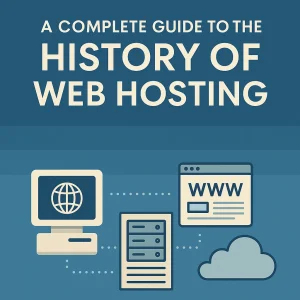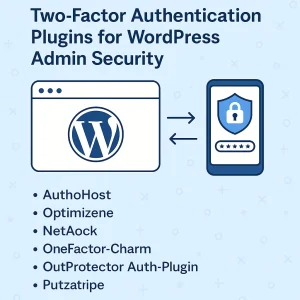 Most people with a website in Canada will have theirs on a shared web hosting plan. It’s the most affordable way to have a site hosted so that it’s always up and available on the Internet, and that’s an absolute need if your website is serving your business. If you can get by with shared hosting and don’t need a VPS then that’s great and it is certainly the most cost-effective means of doing it. But the primary potential shortcoming of shared hosting is the possibility of not having enough bandwidth available for your site if the other sites hosted on the same server are also busy at the same time. The option to upgrade hosting plan for better performance is something you can do if that’s a recurring issue.
Most people with a website in Canada will have theirs on a shared web hosting plan. It’s the most affordable way to have a site hosted so that it’s always up and available on the Internet, and that’s an absolute need if your website is serving your business. If you can get by with shared hosting and don’t need a VPS then that’s great and it is certainly the most cost-effective means of doing it. But the primary potential shortcoming of shared hosting is the possibility of not having enough bandwidth available for your site if the other sites hosted on the same server are also busy at the same time. The option to upgrade hosting plan for better performance is something you can do if that’s a recurring issue.
Even with the best shared hosting plan in Canada this can be what leads website owners to have to reconsider their plan. If that’s the case for you then the good news is that it’s not that much of price jump to switch to VPS hosting, and like most Canadian web hosting providers we have a number of clients who do that every month. With this blog entry though we’re going to look at what can be done too maximize website performance with shared hosting. Anyone who has their site hosted through us is going to have cPanel access to monitor their site’s performance as well as make functional changes to it, and so the question becomes what are those changes that can be made to improve performance.
Some of that may also be related to the infrastructure of the site and the reason that most providers will put most of their focus on Linux web hosting is because it’s the best ‘fit’ for most websites based on the way they’ve been assembled. That likely applies to your website too, and if you have a Linux shared web hosting plan through us then you’ll already be getting better website performance based on our ultra-fast Hexa Core Xeon servers. This alone may be the reason that you don’t need to upgrade hosting plan for better performance, 1 Gbps (gigabyte-per-second) port speed is standard with Linux web hosting here, and that contributes favourably to performance too.
The same goes for 175 pre-installed Softaculous scripts, and there’s more that users will gain from having when they have a Linux shared hosting setup for their website here. So now let’s move right to discussing the moves that any webmaster can make to increase the performance capacity for their website when having it on any shared web hosting plan. Some of these fixes are quite simple and require very little of you to have them implemented, and all of this is good information to have for any time you see the need to be revamping your website in the future too. There’s not just one best shared hosting plan in Canada, but these tips can apply for sites hosted on any of them.
Solid-State Drives are Superior
You can start by considering your storage type. Solid-state drives (SSD) are significantly faster than traditional Hard Disk Drives (HDD) with the way they retrieve and process data almost instantly. Hosting providers that have SSD storage are able to deliver quicker website loading times, and this positively impacts SEO rankings and visitor retention. If it’s possible you should enable server-side caching. Caching minimizes the need for repeated data processing, reducing server load and speeding up page delivery.
Take advantage of built-in caching tools if they are made available to you, as they are very good for optimizes website performance when preloading and storing frequently accessed data. As mentioned we have an intuitive control panel to simplify website and server management. With one-click installations, domain management, and email configurations, cPanel makes handling your website’s backend operations straightforward. This is true even for those with little technical expertise. Faster load times, improved reliability, and a better experience for your website visitors is entirely doable.
Optimized Website Images for Faster Load Times
The largest portion of a website’s file size is often made up by images. When they are unoptimized it can significantly slow down page speeds. This will frustrate site visitors and negatively affecting search engine rankings. The recommendation here is to use compressed formats such as WebP, JPEG 2000, and optimized PNG files to reduce image sizes while maintaining clarity. It’s also advisable to resize images before uploading them ensures that no unnecessary file weight is added to your pages. Many website owners unknowingly upload high-resolution images that are far larger than they need to be, which can slow down loading speeds extensively.
Caching for Better Performance
One of the most effective ways to speed up a website is to cache it. Doing this involves storing copies of frequently accessed website data, which reduces the time required to load pages for returning visitors and may mean that you don’t need to upgrade hosting plan for better performance. Familiarize yourself with server-side caching, which reduces the need for servers to process repetitive requests. You’ll also be able to improve site performance with browser caching so that web browsers store static files like images and scripts locally. Many shared hosting providers include built-in caching mechanisms, such as LiteSpeed Cache, which automatically optimizes website performance. For those using WordPress, caching plugins like WP Rocket and W3 Total Cache can further enhance website speed by optimizing how pages are stored and served.
Limit Unnecessary Plugins and Scripts
The functionality that plug-ins add to a website is well understood, but it’s also true that excessive or poorly coded plugins can slow a website down. Each plugin requires resources to run, and excesses of them can increase the load on a shared hosting server. Regularly auditing installed plugins and remove any that are unnecessary is also in line with having a website that performs at its best. Consider replacing bulky plugins with lightweight alternatives that achieve the same purpose and if you can also reduce the number of external scripts it can further improve load times. Most notable among the ones that can probably go are social media widgets or tracking codes. Then your next move can be to minify JavaScript and CSS files. When these files have too much unnecessary code they slow down page loading times. It’s possible to remove unnecessary characters and spaces from code, helping browsers process the files more efficiently.
Enabling GZIP Compression and Optimizing Website Files
GZIP compression is a powerful technique that reduces the size of files in advance of them being sent to a visitor’s browser. This also promotes better website loading speeds and something you may not have with the best shared hosting plan in Canada as it comes out of the box. Enabling GZIP compression ensures that text-based resources like HTML, CSS, and JavaScript files are compressed before they are transmitted for improved website performance. Many shared hosting providers allow users to enable GZIP compression through cPanel or manually via .htaccess files.
Then if you can also use file optimization techniques such as combining CSS and JavaScript files to further reduce the number of requests a server needs to process you’ll likely also see this contributing to faster page speeds too.
Use a Content Delivery Network (CDN)
Having a content delivery networks in place for your website can also bring huge gains with regards to website performance. With one you can distribute website content across multiple data centres worldwide, and what this will do is make sure that users from different regions get those faster page loading times too. Without one it becomes a situation where all visitors must access a website from the same server location, and this can cause delays if those servers are not nearby. A CDN will server to put website files on multiple servers globally, and visitors receive data from the nearest server for less latency and better website page load times. Most shared hosting plans are compatible with Cloudflare CDN, a popular free solution that helps optimize website delivery and protects against security threats such as DDoS attacks.
Regular Security Updates
Regular updates are always going to be needed if the aim is to have optimal website performance and security. Outdated software increases the likelihood that hackers will be able to exploit vulnerabilities with the site, while also causing performance issues due to outdated coding practices. The easy but effective moves you can make here is to keep WordPress, themes, and plugins up to date ensures that your website benefits from the latest performance improvements and security patches. Many CMS platforms will provide automatic updates, which can be enabled to keep a website secure with minimal effort.
It is also a good idea to review and remove outdated plugins can further improve the site’s overall performance and the way visitors experience the site when arriving at the home page and then moving through the site as they like.
Monitoring & Managing Server Resource Usage
Shared web hosting is always going to have limited resources available to any of the individual sites being hosted on the same server there., When allocated CPU or memory limits are exceeded it can result in performance slowdowns or even temporary suspensions. The recommended fixes here are to avoid excessive resource usage, optimize cron jobs (scheduled tasks), reduce background processes, and limit high-resource-consuming plugins. If you’re with 4GoodHosting for the best shared hosting plan in Canada then all of this can be easily done via your cPanel resource monitoring tools for tracking website performance and making the necessary adjustments. If site performance still isn’t what you need it to be then there is always the option to upgrade the hosting plan for better performance.














